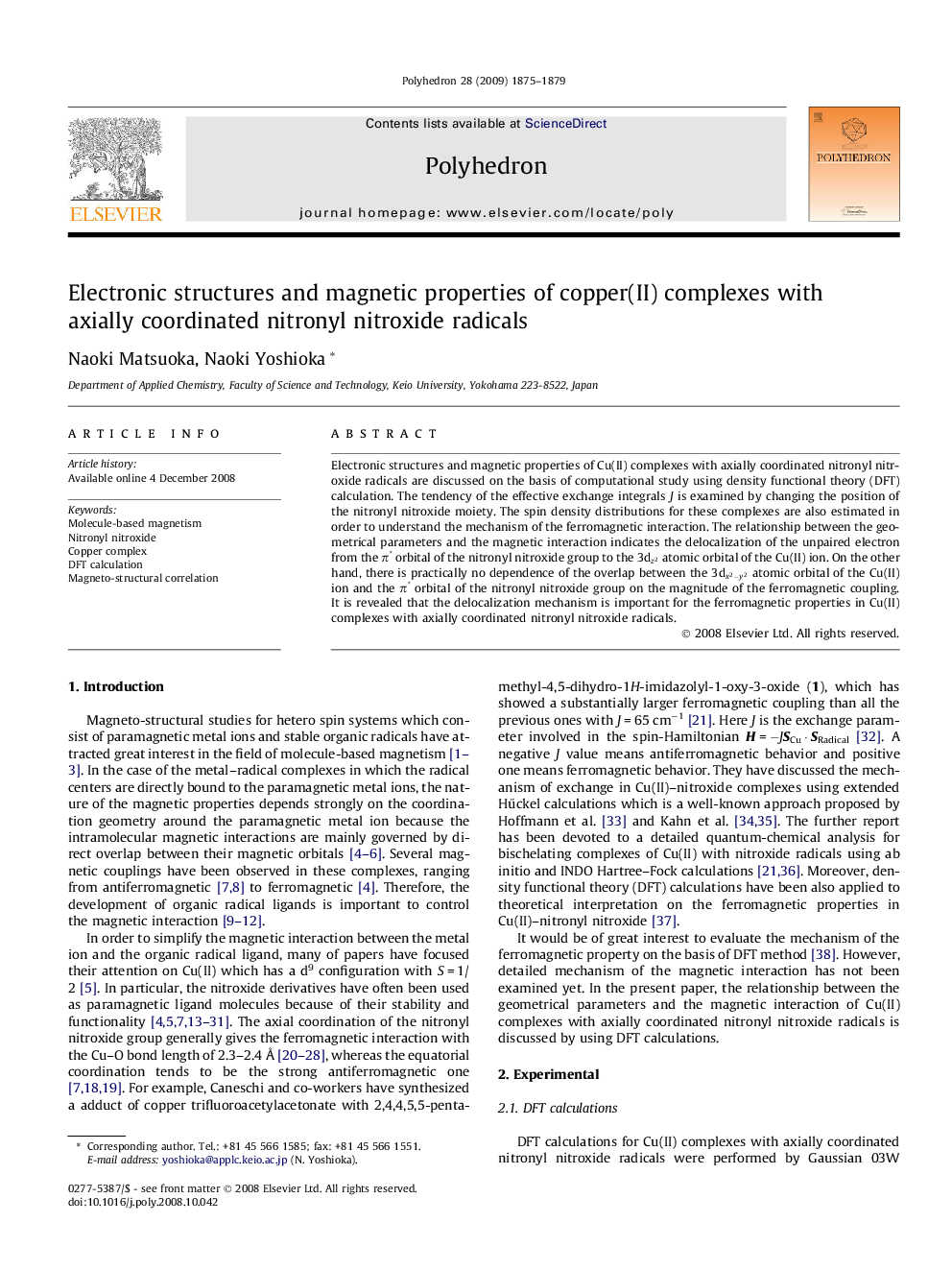| Article ID | Journal | Published Year | Pages | File Type |
|---|---|---|---|---|
| 1339945 | Polyhedron | 2009 | 5 Pages |
Electronic structures and magnetic properties of Cu(II) complexes with axially coordinated nitronyl nitroxide radicals are discussed on the basis of computational study using density functional theory (DFT) calculation. The tendency of the effective exchange integrals J is examined by changing the position of the nitronyl nitroxide moiety. The spin density distributions for these complexes are also estimated in order to understand the mechanism of the ferromagnetic interaction. The relationship between the geometrical parameters and the magnetic interaction indicates the delocalization of the unpaired electron from the π∗ orbital of the nitronyl nitroxide group to the 3dz2dz2 atomic orbital of the Cu(II) ion. On the other hand, there is practically no dependence of the overlap between the 3dx2-y2dx2-y2 atomic orbital of the Cu(II) ion and the π∗ orbital of the nitronyl nitroxide group on the magnitude of the ferromagnetic coupling. It is revealed that the delocalization mechanism is important for the ferromagnetic properties in Cu(II) complexes with axially coordinated nitronyl nitroxide radicals.
Graphical abstractElectronic structures and magnetic properties of Cu(II) complexes with axially coordinated nitronyl nitroxide radicals are discussed on the basis of computational study using density functional theory (DFT) calculation.Figure optionsDownload full-size imageDownload as PowerPoint slide
